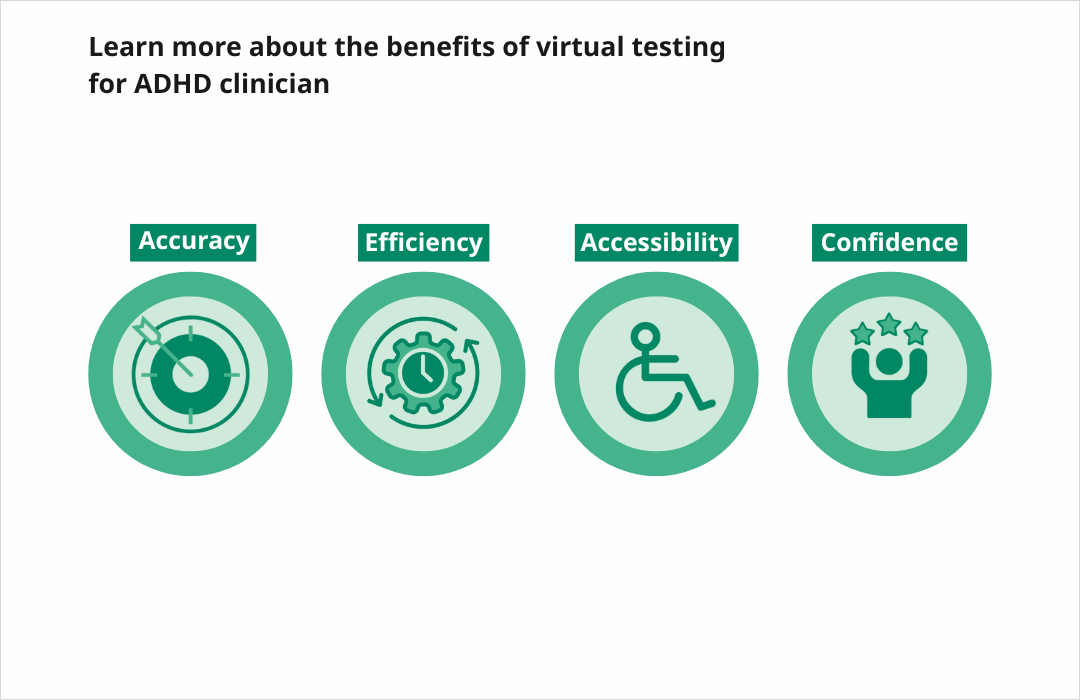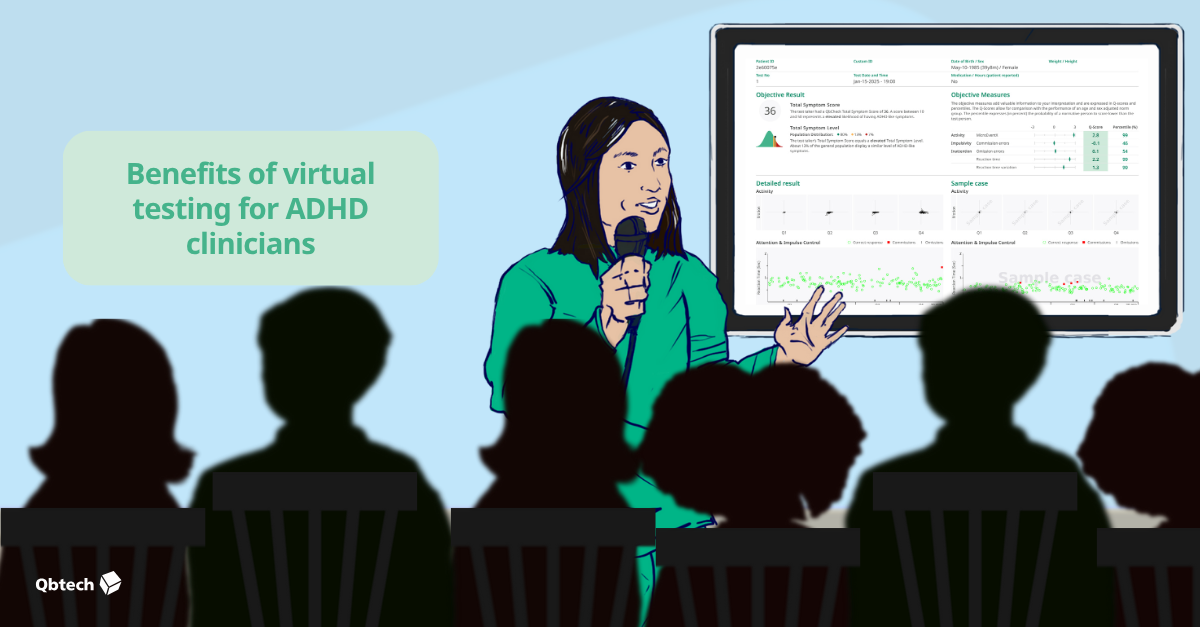Technology is changing how health conditions like ADHD are diagnosed and treated. It’s an area of rapid innovation, with new digital solutions being developed for in-clinic, classroom, and home settings to aid ADHD diagnoses.
Clinicians now have more opportunities than ever before to diversify and expand their testing methodologies, but what role exists for technology in ADHD assessments? Let's explore the latest ADHD research in 2025.
What benefits can digital testing technologies offer clinicians?
Using digital technologies such as an objective or computerized tool, has several benefits for clinicians:
Accuracy – Mulraney et al. reviewed 75 studies covering 41 different ADHD screening tools. They found that many offered excellent overall diagnostic accuracy.
Efficiency – Health tech may increase the efficiency of ADHD assessment pathways, increasing patient throughput and shortening diagnostic decision-making.
Accessibility – Digital tools can enable clinicians to offer flexibility and convenience by providing testing options in hybrid or virtual settings.
Clinician confidence – Digital ADHD tools provide clinicians with objective data, supplementing information from subjective assessments. This can help to increase clinician confidence when making a diagnosis and formulating a treatment plan.

Using digital screening tools to assess ADHD in children
One challenge of assessing children for ADHD is that clinical environments are very different from school or home, which may lead to varied behaviors and responses. Digital technologies facilitate testing in familiar settings. Helping overcome this challenge without any loss in clinical accuracy.
Gabaldón et al. compared the effectiveness of a digital tool for checking for ADHD-related executive functions with the original paper-based version. By shifting the test setting to the classroom, there may be significant gains, such as the opportunity to assess large pupil groups and increased engagement and participation due to testing in a familiar environment. The study found no significant negative change in performance from switching to the digital version of the test. The ability to check for ADHD digitally, without loss of validity or effectiveness, offers clinicians opportunities for remote and scalable testing.
At-home ADHD tests and benefits to clinicians
The development of digital testing technologies for ADHD means that remote testing is now possible. Tests like QbCheck can be completed in a patient’s home or a similar setting. Virtual testing may be more comfortable for patients, particularly children. It reduces the need for travel and makes receiving care more accessible.
There are also significant benefits for clinicians from using at-home ADHD tests:
- Digital ADHD tests provide objective data to supplement clinical observations, helping improve diagnostic confidence
- At-home testing can facilitate the establishment of virtual and hybrid clinics and support clinicians to expand their patient catchment area
- Streamlining the assessment pathway may also help clinicians to reach a decision more quickly and see more patients, with shorter in-clinic appointments.
Can the use of AI lead to more accurate ADHD diagnoses?
As AI becomes more mainstream, there are increased opportunities for clinicians to use the technology to support diagnostic decision-making. A 2023 study analyzed the use of both machine-learning and hybrid algorithms for assisting adult ADHD diagnosis within the UK’s NHS. They found the machine learning model reached an accuracy of 75.03% whilst the hybrid model achieved an accuracy of 93.61%.
Another study applied machine learning algorithms to the analysis of motor activity data in adults with ADHD. They found that one of these algorithms (the Support Vector Machine (SVM) model) achieved an accuracy of 98.43% and demonstrated high sensitivity and specificity.
These early studies demonstrate the potential for incorporating AI technology into ADHD assessments. AI could help clinicians by providing analyzed data with high levels of accuracy to support confident diagnoses.
What next for ADHD health technologies?
Increased investment in health technologies, further innovation, and the growing adoption of digital ADHD tools in the mainstream is likely to continue. The National Institute of Health and Care Excellence (NICE) has recommended a digital technology as part of the ADHD diagnostic process for children and young people in the UK.
As digital tools and AI take a greater role in healthcare, the strengths of these technologies may be increasingly valued by both clinicians and patients, with the potential to become the new clinical standard for accuracy.

